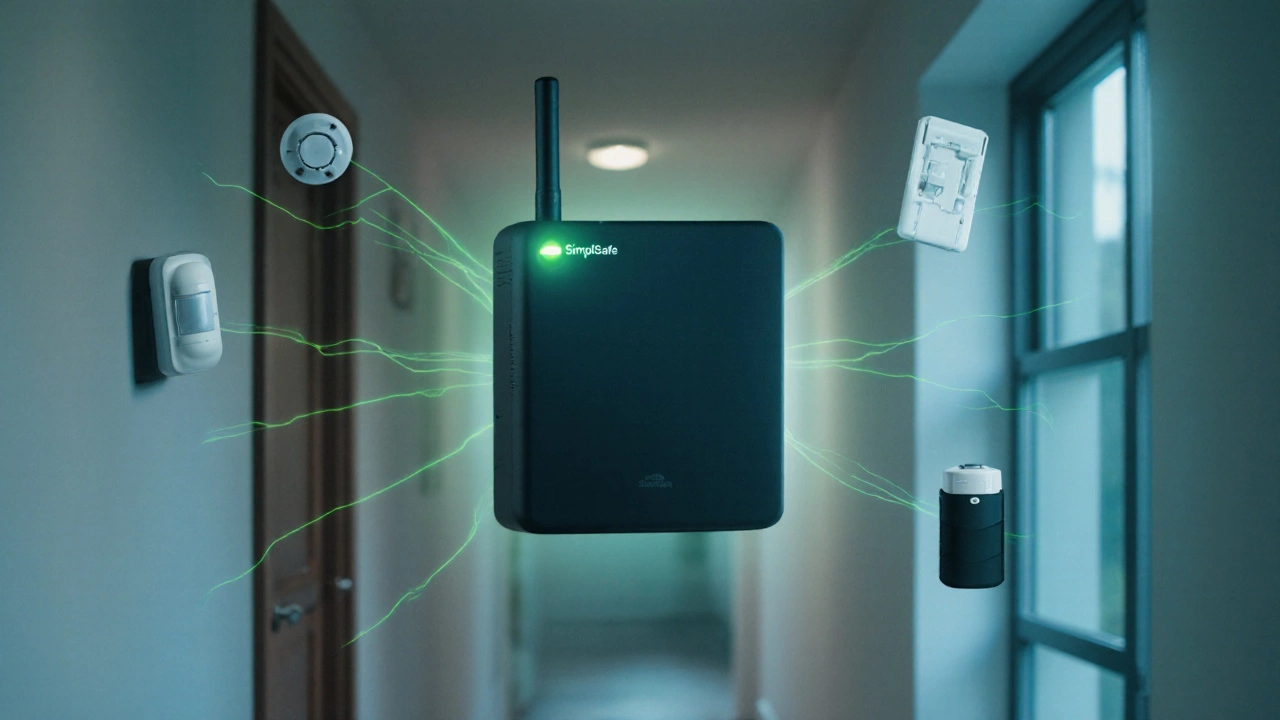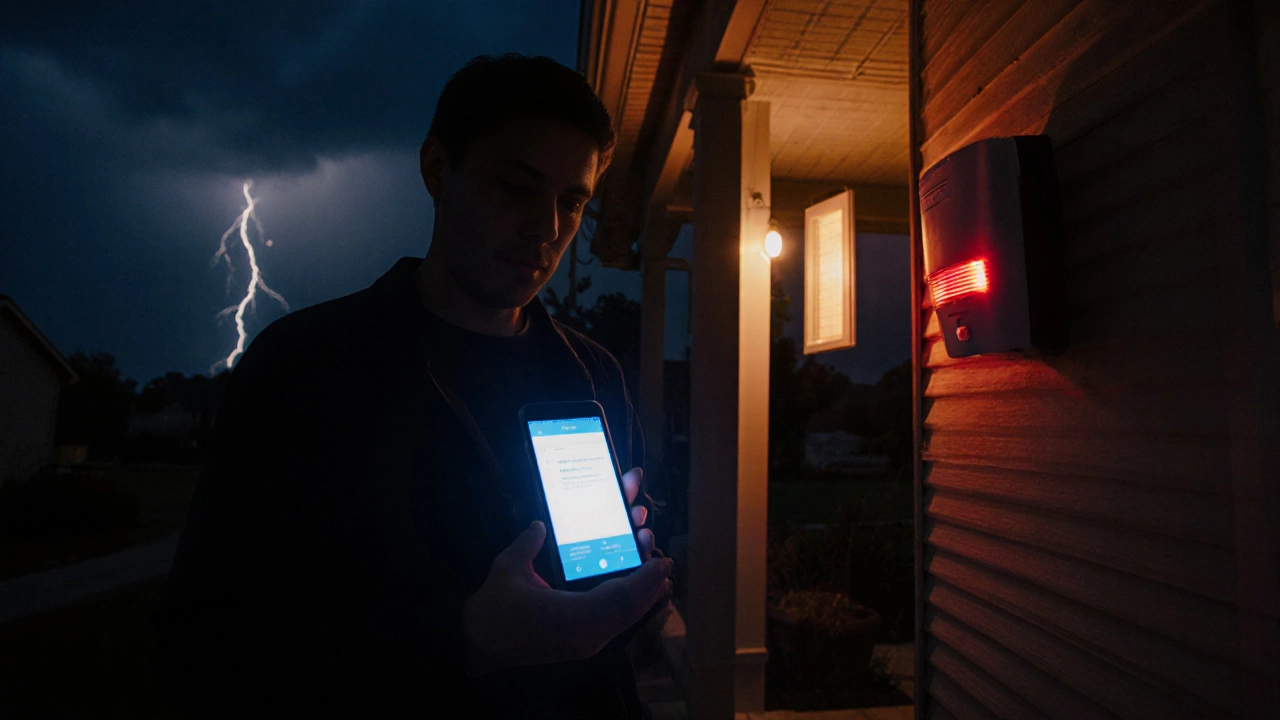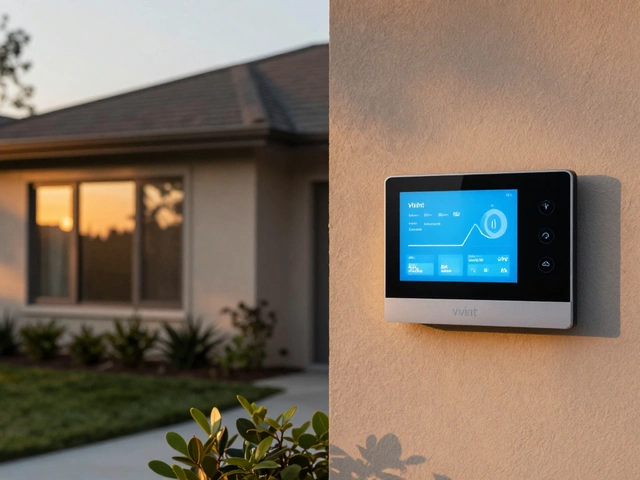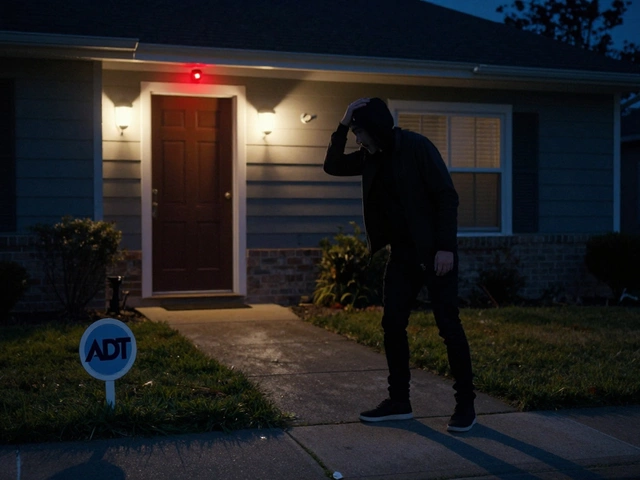SimpliSafe Offline Battery Life Calculator
Estimate Your Offline Protection
Calculate how long your SimpliSafe system will operate during an internet or power outage based on current battery levels and usage patterns.
SimpliSafe Gateway battery lasts up to 14 days when fully charged
SimpliSafe Keypad battery lasts up to 10 days when fully charged
Average usage is 8-12 hours per day
Battery Life Estimate
Gateway
14 days
Battery life when fully charged
Keypad
10 days
Battery life when fully charged
Offline Readiness Checklist
Ensure your system is truly offline-ready:
- Check for green cellular signal in the SimpliSafe app
- Keep gateway battery above 30% for optimal performance
- Test local siren at each entry point
- Consider adding a UPS for extended outages
- Perform monthly system tests
Imagine a heavy storm knocks out the broadband in your neighbourhood. Your TV goes dark, the smart speakers are silent, but the house still feels safe. SimpliSafe offline functionality is the reason - the system can keep the alarm active even when the internet disappears.
What makes SimpliSafe different?
SimpliSafe is a DIY home security system that relies on a combination of Wi‑Fi, cellular, and local battery power to stay operational. The core components are the Gateway the small hub that links all sensors to the cloud, a set of Security sensors motion detectors, door/window contacts, glass‑break sensors, and cameras, and an Alarm keypad the user interface for arming and disarming the system. Each piece runs on its own battery, so a power cut doesn’t instantly shut everything down.
Internet outage vs. cellular backup
When the broadband drops, SimpliSafe doesn’t panic. The Wi‑Fi network the home router that normally carries data to the cloud simply stops sending packets, but the Cellular backup a 4G/LTE connection built into the Gateway kicks in automatically.
The cellular link does three things:
- It informs SimpliSafe’s monitoring centre that the system is still active.
- It sends alerts (like a break‑in) via text or phone call instead of push notifications.
- It keeps the Battery backup the internal rechargeable cells in the Gateway and keypads powered, extending operation for weeks if the power is out.
Because the system is primarily local - the sensors talk directly to the Gateway via proprietary RF - the alarm will sound even if the cellular link fails. That’s the “offline alarm” guarantee.
Real‑world scenarios where offline matters
- Storm‑induced ISP failure: Heavy rain can damage copper lines or fiber, knocking out internet for days. SimpliSafe’s cellular backup ensures you still receive police alerts.
- Power outage: A blackout disables the router and the ISP’s modem, but the Gateway’s battery stays alive for up to 14 days, and the sensors keep communicating.
- Cyber‑attack on your network: If a hacker isolates your Wi‑Fi, the local RF mesh continues to work, and the alarm still triggers.

How to maximise reliability when you’re offline
Even the most resilient system needs a few checks:
- Test the cellular backup: In the SimpliFast app, go to Settings → System → Cellular and run the “Signal Test”. Keep the Gateway in a spot with good 4G coverage.
- Charge the batteries regularly: The Gateway’s LED turns amber when the internal battery falls below 30%. Replace or recharge according to the manual.
- Secure your Wi‑Fi router: Though not required for alarm operation, a stable router reduces false alarms caused by intermittent connectivity.
- Perform a full system test: Arm the system, trigger a sensor, and confirm you hear the siren and receive a cellular alert.
These steps create a safety net: even if the internet never returns, the house remains protected.
How SimpliSafe stacks up against other DIY alarms
| System | Local alarm without internet | Cellular backup | Battery reserve (days) | Typical price (US$) |
|---|---|---|---|---|
| SimpliSafe | Yes - siren sounds locally | Built‑in 4G LTE | 14 (Gateway) / 10 (Keypad) | 399 (base kit) |
| Ring Alarm | Yes - local siren | Optional cellular add‑on | 7 (base station) | 199 (base kit) |
| ADT | No - relies on central monitoring | Professional landline + cellular | 5 (battery backup) | 599 (equipment only) |
Notice that only SimpliSafe and Ring Alarm can sound a local siren without any network connection. ADT, being a professionally monitored service, needs at least one active line to contact the monitoring centre.

Pros and cons of SimpliSafe’s offline design
Pros
- Immediate local alarm - you don’t have to wait for the cloud.
- Automatic cellular fallback - no manual re‑configuration.
- Long battery life on the Gateway keeps the system alive for weeks.
- Easy DIY installation - no need for wiring or professional help.
Cons
- Cellular data plan costs extra (usually $5‑$8 per month).
- Battery replacement is a maintenance task every 2‑3 years.
- Unlike fully wired alarms, RF sensors can experience occasional interference.
Quick checklist: Is your SimpliSafe truly offline‑ready?
- Gateway shows green cellular signal in the app.
- Battery level above 30% for all devices.
- Local siren tested and audible at each entry point.
- Backup power (UPS) optional but recommended for longer outages.
Frequently Asked Questions
Will SimpliSafe still alert me if the Wi‑Fi goes down?
Yes. The Gateway automatically switches to its built‑in 4G/LTE connection and sends you a text or phone call.
Do I need a separate cellular plan?
SimpliSafe offers a cellular add‑on for $5‑$8 per month. It’s optional, but without it you lose remote alerts during an internet outage.
What happens during a power outage?
All battery‑powered devices keep working. The Gateway’s internal battery lasts about two weeks, after which the alarm will still sound locally but won’t reach the monitoring centre.
Can I test the offline mode?
Yes. In the app, disable Wi‑Fi on your phone, then arm the system and trigger a sensor. You should hear the siren and get a cellular alert.
Is SimpliSafe better than ADT for internet outages?
For pure offline reliability, SimpliSafe is superior because it can sound a local alarm without any network. ADT relies on a constant line to its monitoring centre.






